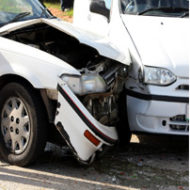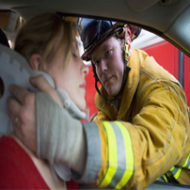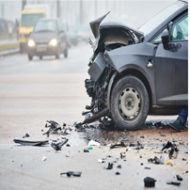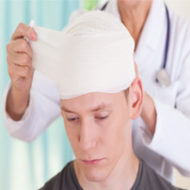Summer Driving Deadly for Teens
June 27, 2017Now that the school year has ended, more inexperienced teen drivers are on the roads, which can have a serious impact on the number of car accidents that occur during the summer months. According to the National Highway Traffic Safety Administration, an average of 1,022 people suffered fatalities in car accidents involving teen drivers during » Read More
Vehicle Size and Car Safety
June 26, 2017Many people purchase small, compact cars because they are fuel efficient. However, as the price of gas remains fairly low, more people are buying larger cars, including SUVs. While it may be more expensive to fill an SUV’s gas tank, you are less likely to experience fatality in a car accident if you are driving » Read More
Baltimore Car Accident Lawyers: Crash Reports Fail
June 12, 2017In order for law enforcement to effectively address the rise in traffic fatalities, they must be able to identify what caused the wreck. Unfortunately, current crash reports do not include codes for some of the most common causes of car accidents today, including drowsy driving, drugged driving, and distracted driving. In fact, a National Safety » Read More
Baltimore Car Accident Lawyers: Drugged Driving
June 5, 2017A recent report by the Governors Highway Safety Association and the Foundation for Advancing Alcohol Responsibility reveals that drugged driving is on the rise, resulting in more car accident fatalities in 2015 than drunk driving. Both illegal drugs and prescription medications contribute to this growing problem, particularly considering the ongoing opioid epidemic. While there is » Read More
Baltimore Car Accident Lawyers: Safety Tips for Work Zones
May 25, 2017If you are on your way to work or to an appointment and approach a construction zone, chances are it is going to cause significant delays, especially if you are driving during rush hour. It can be frustrating to watch traffic come to a screeching halt because construction workers are repairing a pothole or building » Read More
Baltimore Car Accident Lawyers: Roundabouts Can Curb Accidents
March 25, 2017According to the Federal Highway Administration, approximately 40% of car accidents and over 20% of traffic fatalities in the United States take place at busy intersections. This is not surprising considering many intersections have multiple lanes with traffic signals directing cars traveling in a number of different directions, often during rush hour when people are » Read More
Baltimore Car Accident Lawyers: Whiplash
March 23, 2017Whiplash is one of the more common injuries associated with car accidents. The impact of a car hitting another vehicle or an object like a tree or phone pole causes the driver’s neck to snap forward and backwards like a whip. Victims of whiplash often experience symptoms for months, sometimes even years, after the wreck, » Read More
Baltimore Car Accident Lawyers: Deadly Driving Distractions
March 21, 2017The automotive industry has made significant advancements in safety technology over the years, from seat belts and airbags, to collision warning systems and rollover prevention technology. Yet, the number of accident-related deaths is the highest it has been in close to a decade. Last year alone, approximately 40,000 people died in car accidents. Officials believe » Read More
Baltimore Car Accident Lawyers: Head-On Collisions
March 17, 2017The sheer force of a head-on collision can cause severe injuries to those involved, if they are lucky enough to survive the impact at all. While airbags and seatbelts have helped reduce the number of fatalities, these wrecks continue to occur, resulting in severe and often fatal injuries. Fortunately, head-on collisions are relatively rare, but » Read More
Baltimore Car Accident Lawyers: Long-Term Effects of Concussions and Driving
March 16, 2017Like any head injury, concussions can have lasting effects on a person’s ability to successfully perform simple daily activities, even after the initial symptoms of the concussion have disappeared. Until recently, there has been no research on the long-term effects of a concussion on a person’s ability to drive. Researchers at the University of Georgia’s » Read More















